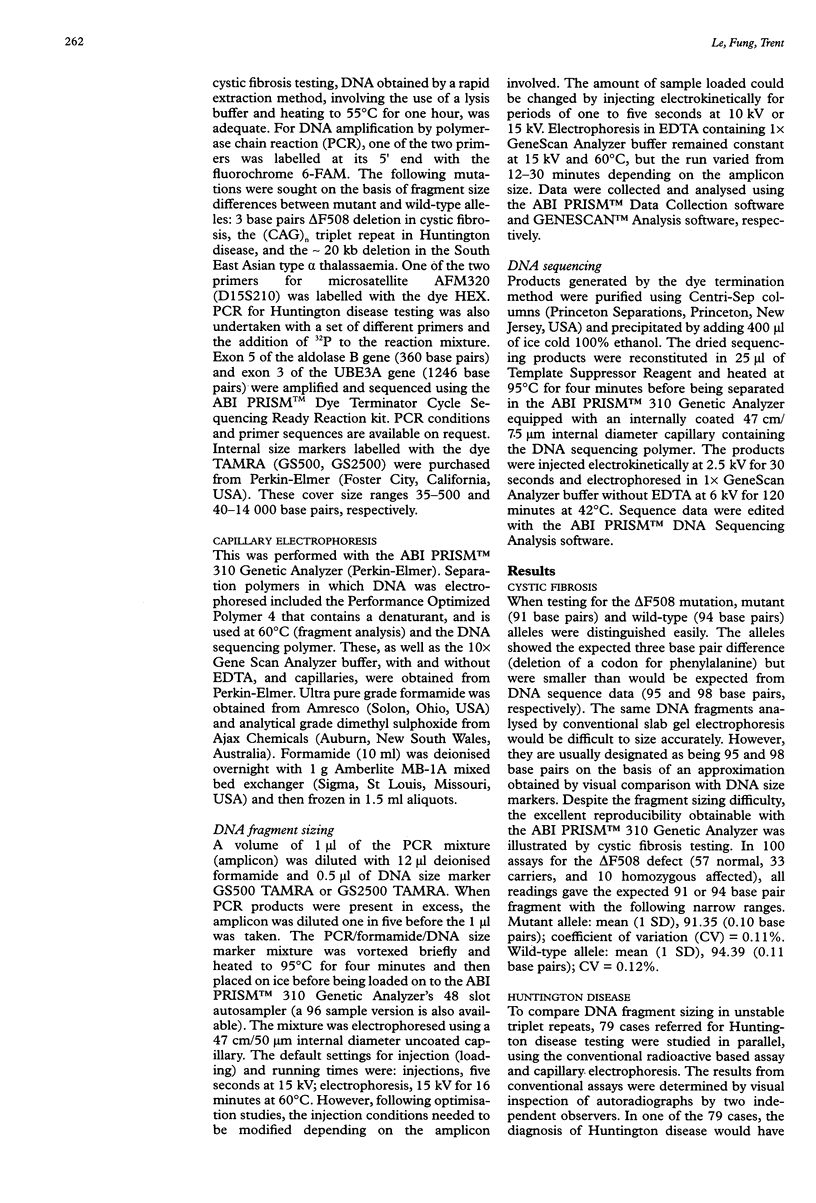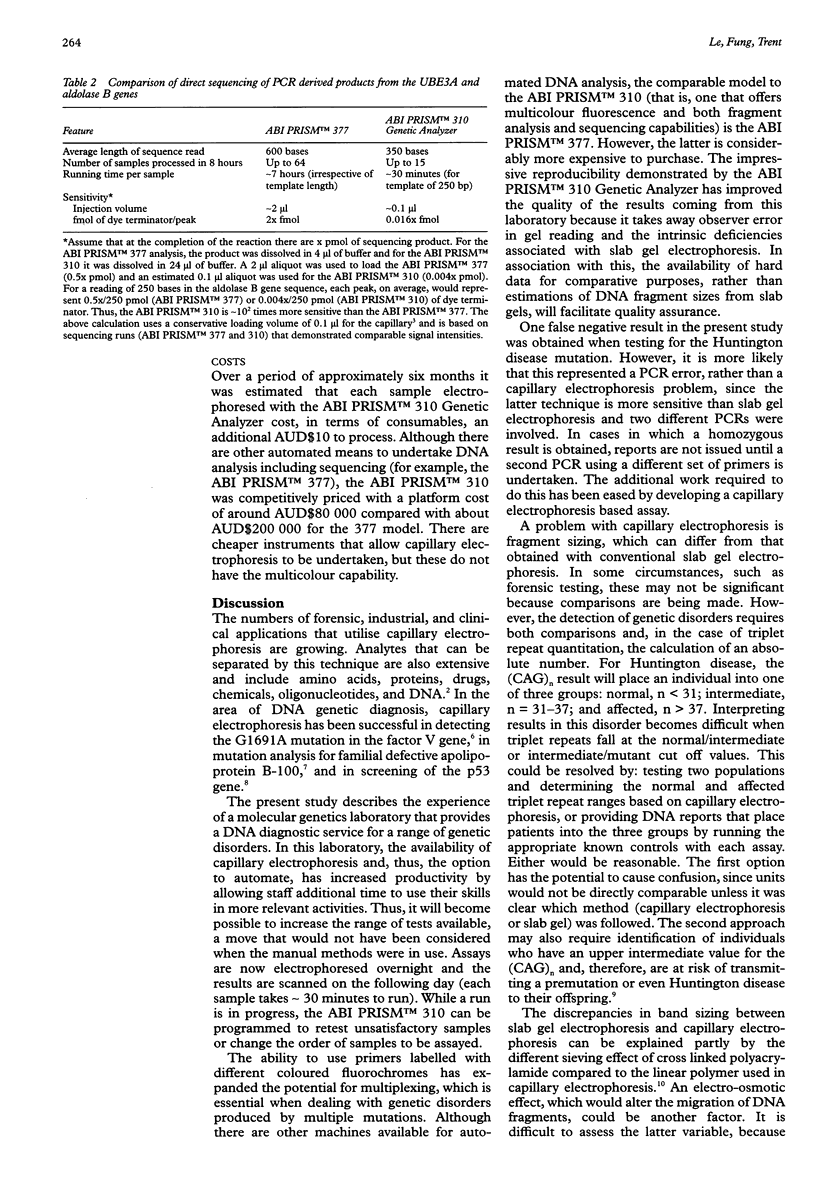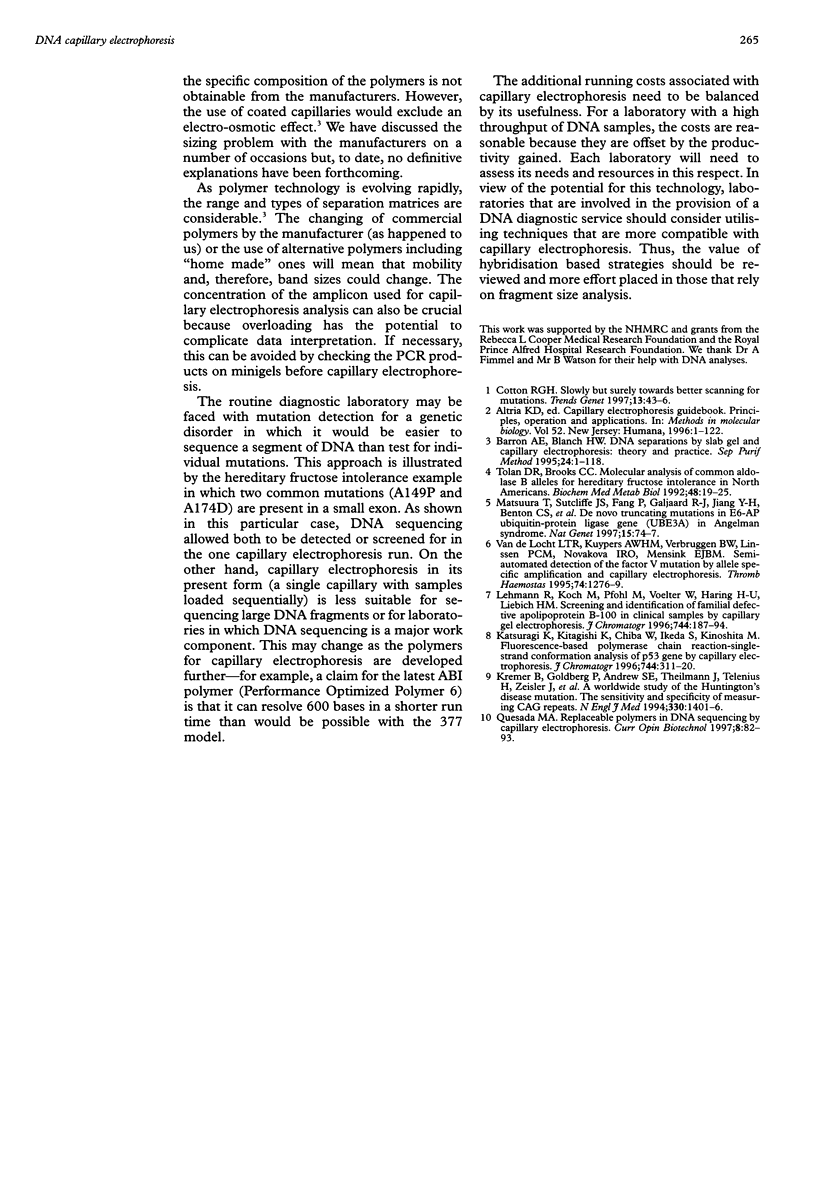Abstract
AIM: To facilitate DNA mutation analysis by use of capillary electrophoresis. METHODS: The usefulness and applications of capillary electrophoresis in DNA fragment sizing and sequencing were evaluated. RESULTS: DNA mutation testing in disorders such as cystic fibrosis, Huntington disease, alpha thalassaemia, and hereditary fructose intolerance were undertaken effectively. However, sizing the (CAG)n repeat in the case of Huntington disease was a potential problem when using capillary electrophoresis. Separation polymers used in capillary electrophoresis are still in the developmental phase, with improved ones being released regularly. CONCLUSIONS: In the DNA diagnostic setting, capillary electrophoresis is a valuable development because it expands the scope for automation and has useful analytical properties. The potential to perform complex multiplexing within one electrophoresis run facilitates DNA diagnosis. The different mobility of DNA fragments in capillary electrophoresis compared with conventional gel electrophoresis will require, in some circumstances, additional care when results are being interpreted or reported. Capillary electrophoresis is a cheap alternative for combined automated sequencing and fragment analysis that utilises multicolour fluorescence capability. However, in its present form, it is not useful for large scale sequencing.
Full text
PDF




Selected References
These references are in PubMed. This may not be the complete list of references from this article.
- Cotton R. G. Slowly but surely towards better scanning for mutations. Trends Genet. 1997 Feb;13(2):43–46. doi: 10.1016/s0168-9525(97)01011-1. [DOI] [PubMed] [Google Scholar]
- Katsuragi K., Kitagishi K., Chiba W., Ikeda S., Kinoshita M. Fluorescence-based polymerase chain reaction-single-strand conformation polymorphism analysis of p53 gene by capillary electrophoresis. J Chromatogr A. 1996 Sep 13;744(1-2):311–320. doi: 10.1016/0021-9673(96)00397-4. [DOI] [PubMed] [Google Scholar]
- Kremer B., Goldberg P., Andrew S. E., Theilmann J., Telenius H., Zeisler J., Squitieri F., Lin B., Bassett A., Almqvist E. A worldwide study of the Huntington's disease mutation. The sensitivity and specificity of measuring CAG repeats. N Engl J Med. 1994 May 19;330(20):1401–1406. doi: 10.1056/NEJM199405193302001. [DOI] [PubMed] [Google Scholar]
- Lehmann R., Koch M., Pfohl M., Voelter W., Häring H. U., Liebich H. M. Screening and identification of familial defective apolipoprotein B-100 in clinical samples by capillary gel electrophoresis. J Chromatogr A. 1996 Sep 13;744(1-2):187–194. doi: 10.1016/0021-9673(96)00244-0. [DOI] [PubMed] [Google Scholar]
- Matsuura T., Sutcliffe J. S., Fang P., Galjaard R. J., Jiang Y. H., Benton C. S., Rommens J. M., Beaudet A. L. De novo truncating mutations in E6-AP ubiquitin-protein ligase gene (UBE3A) in Angelman syndrome. Nat Genet. 1997 Jan;15(1):74–77. doi: 10.1038/ng0197-74. [DOI] [PubMed] [Google Scholar]
- Quesada M. A. Replaceable polymers in DNA sequencing by capillary electrophoresis. Curr Opin Biotechnol. 1997 Feb;8(1):82–93. doi: 10.1016/s0958-1669(97)80162-0. [DOI] [PubMed] [Google Scholar]
- Tolan D. R., Brooks C. C. Molecular analysis of common aldolase B alleles for hereditary fructose intolerance in North Americans. Biochem Med Metab Biol. 1992 Aug;48(1):19–25. doi: 10.1016/0885-4505(92)90043-x. [DOI] [PubMed] [Google Scholar]
- van de Locht L. T., Kuypers A. W., Verbruggen B. W., Linssen P. C., Nováková I. R., Mensink E. J. Semi-automated detection of the factor V mutation by allele specific amplification and capillary electrophoresis. Thromb Haemost. 1995 Nov;74(5):1276–1279. [PubMed] [Google Scholar]


